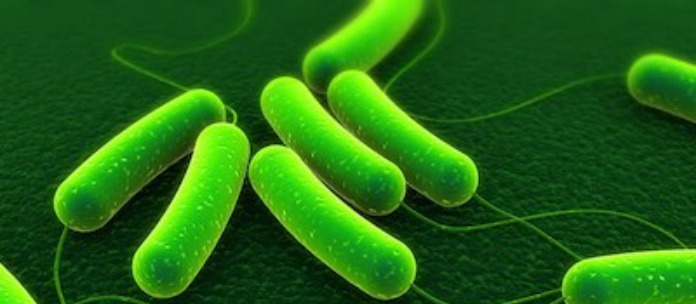The multistate E. coli O157:H7 HUS outbreak that is linked to romaine lettuce from the Yuma, Arizona growing region has sickened at least 121 people in 25 states. This is a serious outbreak. More than 50 people have been hospitalized. Fourteen of those people have been diagnosed with HUS, a complication of this infection that can cause kidney failure. And one person in California has died. Consumers are asking questions about this outbreak; namely, how can they protect themselves and their families? One of the questions is: will washing romaine lettuce and other produce eliminate the pathogenic bacteria?

The answer is, unfortunately, no. There are several reasons for this.
First, it only takes 10 Shiga toxin-producing E. coli bacteria to make a person very sick. That tiny amount is invisible to the eye. Washing romaine lettuce will not remove all the bacteria from microscopic surface of every leaf. Experts say that washing romaine lettuce and other produce can only reduce the number of bacteria that may be present, not completely eliminate them.
Second, pathogenic bacteria such as E. coli O157:H7 can form biofilms. These bacteria tend to cluster in small clumps so they can communicate with each other and protect each other. The bacteria produce a matrix made up of proteins, polysaccharides, and nucleic acids. The matrix is very dense and protects the bacteria from cleaning agents. It also protects the bacteria from antibiotics, and even desiccation. A simple rinse with water or a cleaning solution may not penetrate that biofilm.
And finally, the deeply crenelated surface of leafy greens provides lots of places for bacteria to hide. The same is true for other types of produce, especially cantaloupe. And, if there are tiny tears, bruises, or rips in the lettuce leaf, the bacteria can actually get inside. No amount of washing any kind of produce can reach the bacteria then.
The only thing that will kill E. coli bacteria is heat; the food must be heated to 160°F. There are very few recipes that call for cooked romaine lettuce. Grilling romaine lettuce halves will not increase the temperature enough to kill any bacteria that may be present.
So what can you do to protect yourself? For now, avoid romaine lettuce if you can’t positively and absolutely identify where it was grown. The Yuma, Arizona growing season is over, but romaine lettuce has a long shelf life of about 21 days. And most produce packages are not marked with the farm where the leafy green was grown. You can ask your retailer where the lettuce came from, but there is no guarantee the romaine you are about to buy is completely safe.
Remember to follow basic food safety instructions. If you have romaine lettuce in your fridge, and you aren’t 100% positive where it came from, throw it away because cross-contamination can occur between produce and the shelves and other items. Then clean your fridge with a mild bleach solution to kill bacteria. Wipe down containers with the bleach solution as well, then rinse and dry everything.
This outbreak is very dangerous. The high percentage of people who have been sick enough to be hospitalized and the high number of people with HUS demonstrate that these bacteria are very pathogenic. Don’t take a risk, especially if you or someone in your family is in a high risk group: elderly, young, pregnant, or with a chronic illness. If you or someone in your family is experiencing the symptoms of E. coli or HUS, especially if romaine lettuce has been consumed in the past 10 days, see your doctor. Those symptoms include bloody diarrhea, little urine output, pallor, lethargy, and painful abdominal cramps.
Pritzker Hageman law firm helps people sickened by contaminated food get answers, compensation and justice. Our attorneys have represented patients and families of children in personal injury and wrongful death lawsuits against food manufacturers, restaurants, retailers, schools, and others. Attorney Fred Pritzker recently won a $7.5 million judgment on behalf of a young client whose kidneys failed because he developed hemolytic uremic syndrome after an E. coli infection. If you have a question about this outbreak, ask us about it and leave a comment below. We will keep you informed as more information is released by the CDC and FDA.




